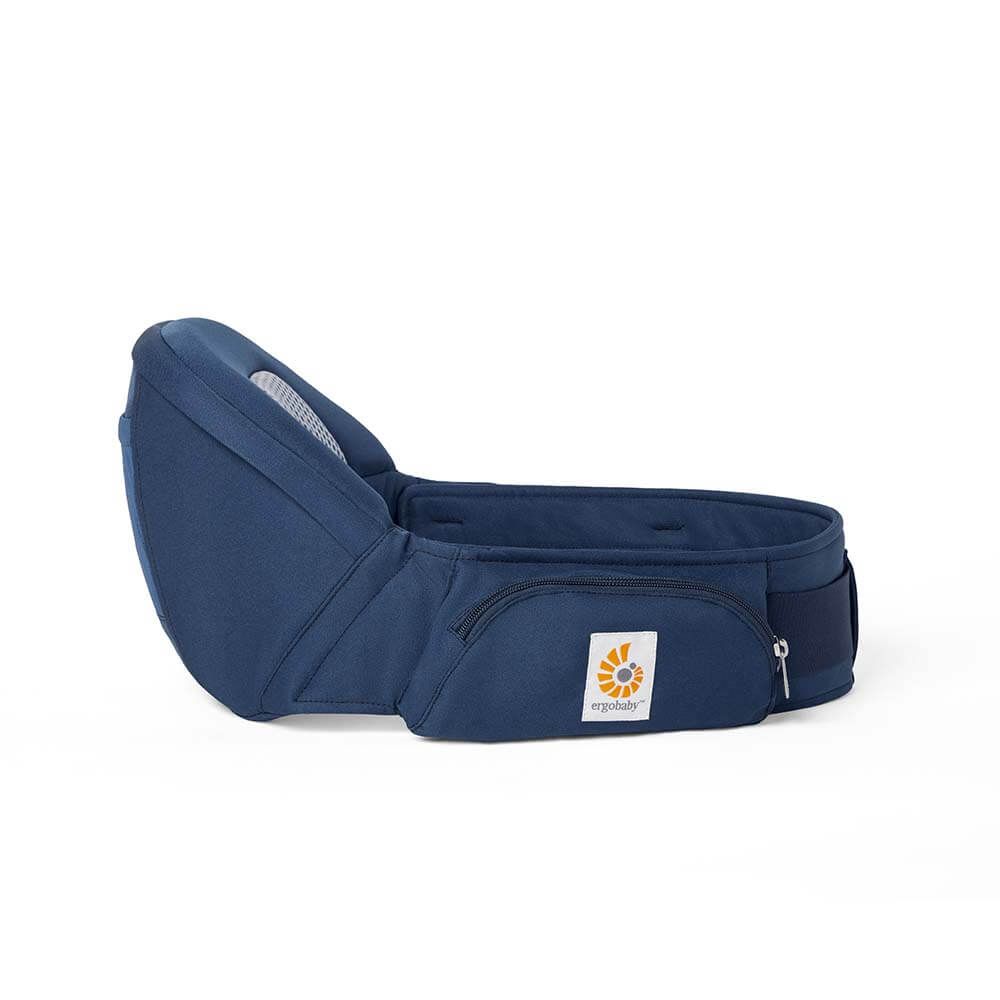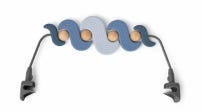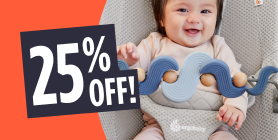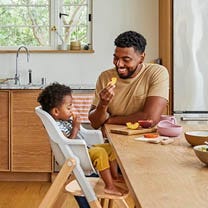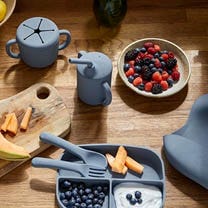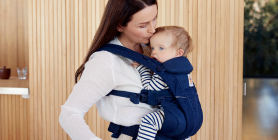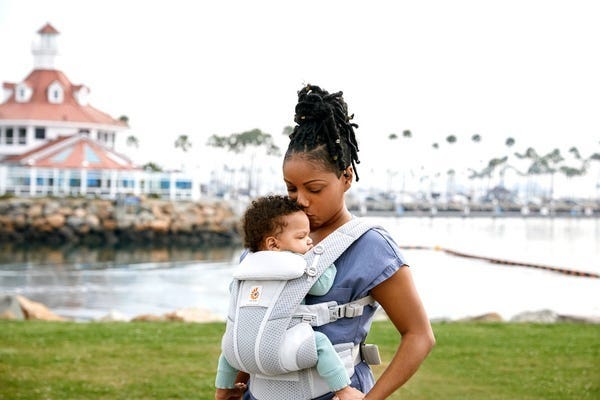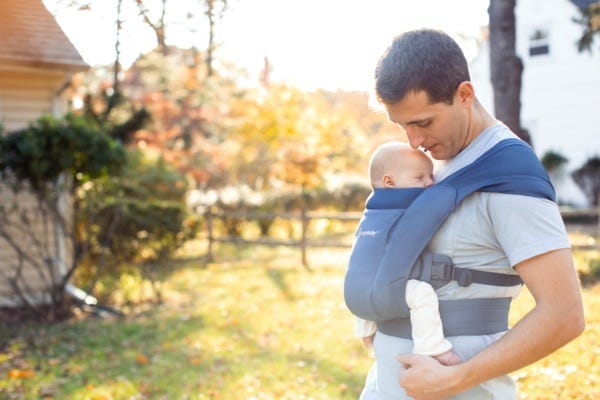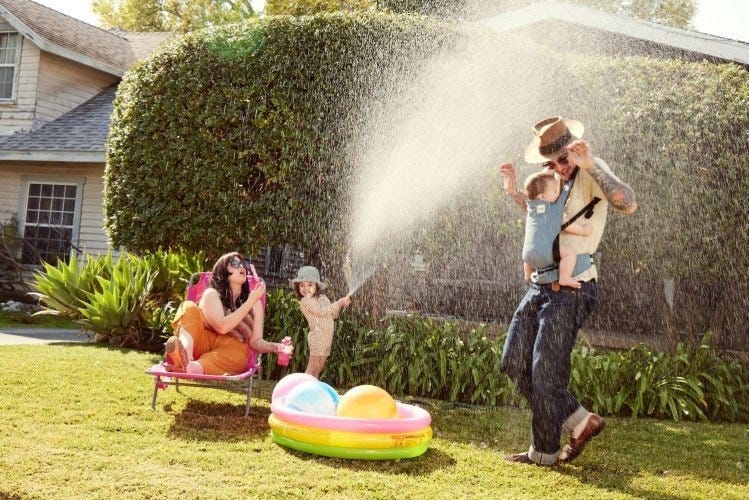Imagine that you are alone in a foreign country, with no understanding of the primary language. Without technology or books to guide you, you must navigate your way through this world. Hungry? Need a place to sleep? Where is the train? After many frustrating encounters, you might finally try using your hands to communicate. Babies and toddlers live in this world every day – they have needs that they cannot verbally express. No wonder they have tantrums! Sign language can help ease this transition from non-verbal to verbal, and, some assert, even increase the speed of language acquisition and spatial reasoning development in toddlers. As long as signing is used in conjunction with speech, it can serve to enhance a baby’s understanding of language. Once the baby can sign back, two-way communication is possible. Parents can speak as they sign (“Yes, that IS a yellow car. Did you hear it?”), and the baby learns to associate signs with words and sounds. Many parents choose to teach only the most basic signs – milk, sleepy, hungry, etc. – to more effectively meet the most immediate needs of their baby. Any sign can be used, as well, as long as the sign is used consistently. Other parents sign for nearly everything, from “Grandma” to books, toys, animals, and other common objects. In an interview with Signing With Your Baby (http://www.signingbaby.com), multi-lingual family Mariana and Mattis discuss their experience signing with baby Velma. Beginning when she was 6 months old, Mariana and Mattis began signing to Velma. Mariana admits to having doubts about the effectiveness of signing, especially since it took about 3 months for Velma to respond with signing. But, she adds, by her first birthday Velma knew about 10 signs, and within a week she was using 40 signs! By about 15 months, Velma was able to sign phrases, stringing together several signs to relate an idea. Velma’s parents enjoyed watching the different ways she arranged her signs, as well, depending on whether she was using English, Portuguese, or Swedish. Babycenter.com offers a few helpful tips on how to begin signing with your baby. http://www.babycenter.com/0_signing-with-your-baby-or-toddler-how-to-communicate...
- As with any new skill, it's important to go at your baby's pace and keep it fun. The best time to start is when your baby begins to develop a real desire to communicate. This is usually around 9 or 10 months — you'll notice your baby is more sociable, starts to babble, and uses noises and facial expressions to get your attention.
- Start with a sign for something she's interested in. Lots of babies quickly pick up the sign for "more" in relation to food!
- Every time you use the word, show your baby the sign, too. Always use the same sign, use lots of repetition, and emphasize the key word along with the sign, so your baby can clearly see and hear the connection: "Do you want some more? You'd like some more would you? Okay, let's get you some more!"
- Your baby may try the sign herself after a few days, or it may take several weeks — be patient. Make it as fun as you can. Babies are much more likely to learn from something they enjoy doing.
- If you want to go to baby-signing classes, you'll see resources listed at the end of this article. Many of the companies that offer classes produce books and DVDs that you might find helpful — look for details on their Web sites.
The site also offers a few signs to begin with:
- "food" — put your finger tips to your lips
- "all gone" — move your hand, palm up, backward and forward
- "scared" — tap your chest again and again
- "hot" — put your hand out and withdraw it quickly
- "where?" — shrug your shoulders, with your palms held out
- "rabbit" — wrinkle up your nose or hold up two fingers
- "car" — steer an imaginary wheel
- "book" — hold hands flat with palms up
Any number of signs can help parents and babies avoid the frustration caused by difficulty in communication. Whether a parent chooses to teach their baby a few signs to ease the transition from infancy to toddlerhood, or teaches a large vocabulary of signs to their baby, enhanced communication can only make things easier. Even without the potential long-term language benefits to babies, signing can provide a means of expression for babies, and can offer parents a window to understanding the thoughts of their baby. Mariana, Velma’s mother, shared her thoughts on signing with her baby: I want to say to all parents reading this that signing with Velma has been one of the absolute best parenting choices we have made to date. Really. It allows her to be incredibly specific about her wishes, her thoughts and ideas. It takes away a world of frustration and brings us so much joy… there’s nothing like seeing the happiness in her eyes every time she’s understood! She gets so happy with herself. And not only has signing empowered her, it has given us a wonderful window to her mind, to know how she makes connections, how she perceives the world around her and how she thinks about things. It’s been an incredibly wonderful experience that has far surpassed any of our expectations, I can’t tell you how happy I am that we didn’t give up when it got monotonous or hard in the beginning! (http://signingbaby.com/main/?p=151)
Link to: Baby Sign Language poster: http://www.cafepress.com/babies_and_sign.234794112# Signing Story Time is Nourishing Baby's Brain http://www.naturalbabypros.com/signing-story-time-nourishing-babys-brain Joann Woolley of Sign4Baby, Master Level Instructor. ASL is her first language (her mother is deaf) and her first sign was ‘milk.’ Her life long experience with signing provides great insight to the language and how babies who sign have lifelong advantages. http://www.naturalbabypros.com/featured/sign4baby Free Signing Story Time & Nursery Rhymes! http://www.naturalbabypros.com/free-signing-story-time-nursery-rhymes
Emotional Benefits of Getting Outside
Spending time in nature with your baby can strengthen the bond between you. The simple act of holding your baby close, feeling their warmth, and sharing new experiences together can create strong emotional connections. It’s also a wonderful way to reduce stress and improve your mood. When my littles were extra fussy, I’d take a walk around the neighborhood. Even though I don't live in an area with trails and surrounded by nature, simply behind outside changed everything. A little vitamin D does wonders!
Cognitive Development
Nature is a sensory wonderland for babies. The different sights, sounds, and smells can stimulate your baby’s senses and promote cognitive development. Watching leaves rustle, hearing birds chirp, and feeling the texture of a tree bark can all contribute to their learning and development.
All About Baby Carriers for Nature Adventures
Choosing the Right Baby Carrier
When it comes to selecting the best baby carrier for summer adventures, there are several options to consider.
Types of Baby Carriers:
- Wraps: Perfect for newborns, providing a snug and secure fit.
- Slings: Ideal for quick and easy use, offering good ventilation.
- Soft Structured Carriers: Versatile and comfortable for both parent and baby, suitable for longer trips.
Factors to Consider:
- Baby’s Age and Weight: Ensure the carrier is appropriate for your baby’s size and weight. For example, Ergobaby’s Embrace Newborn Carrier is perfect for the fourth trimester where baby is small and you’re looking for an easy way to stay close. As they grow, you’ll want to upgrade to an all-position carrier that’s meant for growing babies.
- Parent’s Comfort and Ergonomics: Look for carriers with padded shoulder straps and lumbar support if you’re planning on longer outings.
- Ease of Use: Choose a carrier that is easy to put on and take off.
- Climate and Breathability: Opt for carriers made of breathable fabrics to keep you and your baby cool in hot weather.
Safety Tips:
- Proper Positioning: Ensure your baby is seated correctly, with their legs in an "M" position and their head should be close enough to kiss.
- Checking for Wear and Tear: Regularly inspect your carrier for any signs of damage.
- Ensuring Adequate Support: Make sure the carrier provides proper support for your baby’s head and neck.
Exploring Nature with a Baby Carrier
Ideal Spots for a Nature Walk with Baby
- Parks and Gardens: Great for leisurely walks and picnics.
- Nature Trails and Forests: Perfect for more adventurous outings.
- Beaches and Lakesides: Wonderful for enjoying the water and sand, with the right carrier.
Activity Ideas
- Hiking: Enjoy a scenic hike with a hiking baby carrier that offers support and storage.
- Bird Watching: Use your carrier to keep your baby close while you explore and observe wildlife.
- Picnics: A carrier can free up your hands, making it easier to carry picnic supplies.
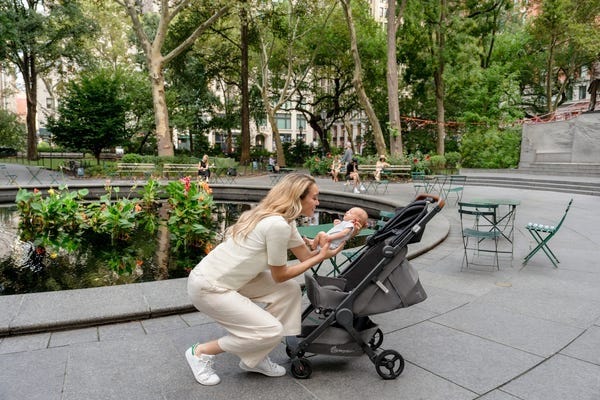

Advantages of Using Strollers for Nature Adventures
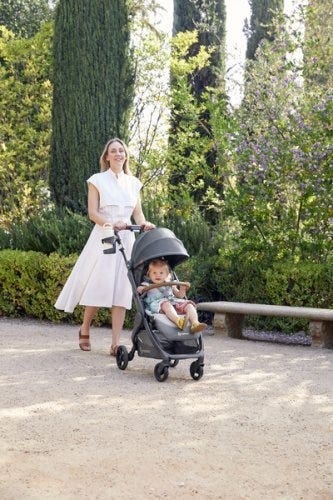

While baby carriers are fantastic for mobility and closeness, depending on the adventure of choice you might want to be a stroller along too.
There are a LOT of baby stroller options on the market. So we understand how confusing it can be to choose the one that’s right for your family. Not only are there a variety of brands, but a variety of strollers that serve different purposes.
There are a few types of strollers on the market:
- Full-sized stroller: This is typically the stroller parents thing of buying for all its versatility.
- Lightweight or umbrella stroller:These compact strollers are perfect for on-the-go adventures.
- Jogging stroller: Designed for parents who want to combine fitness with outdoor adventures.
- Double stroller: Designed for parents with multiple kids, especially twins.
- Car seat carrier: These strollers connect to a specific car seat. We don't typically recommend these as they can be unsafe for baby and uncomfortable for parents who are pushing.
Learn more about the types of strollers and which one would be best for you.
Benefits of Bringing a Stroller
- Storage Space for Gear: Ample room for carrying all your essentials like a diaper bag, beach toys and more.
- Shade and Weather Protection: Built-in canopies to shield your baby from the sun when they are lounging.
- Options: If you have more than one kid, you can stroll with one and carry the other. Or, if you’re getting warm or your little one is getting fussy, you can switch up their position from stroller to carrier or vice versa.
Safety Tips for Strollers
- Ensure your stroller is in good working condition. Make sure buckles are still buckling and that there are no rips or holes that could compromise your baby’s safety.
- Use sunshades or bug nets to protect your little one’s skin.
- Securing the baby properly: always buckle up your baby for safety even if you think they are old enough to go without the buckle.
Combining Baby Carriers and Strollers
For the ultimate flexibility, consider using both a baby carrier and a stroller on your outings.
Combining both options allows you to adapt to different situations. Use the carrier for more rugged trails and switch to the stroller for smoother paths or when your baby needs a nap.
Transition Tips
- Smooth Transitions: Plan stops where you can easily switch from carrier to stroller.
- Pack Light: Only bring essentials to make transitions easier.
Tips for a Successful Adventure
Planning Ahead
- Route Planning: Choose baby-friendly trails and parks. Check local mom groups or outdoor groups and get recommendations for the best outings for kids.
- Check Weather Conditions: Avoid extreme heat or unpredictable weather. Even with our most breathable carriers, when it’s hot, it’s hot. And having two bodies against each other in the heat will be naturally hot and sticky already.
- Packing Checklist: Include diapers, snacks, water, sunscreen, and a first-aid kit. These all-position carriers have storage pockets where you can fit some of the items easily!
- Stay Hydrated and Nourished: Pack healthy snacks to keep energy levels up and bring plenty of water for both you and baby.
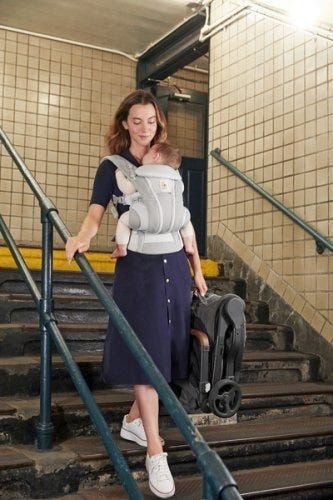

Summer adventures with your baby are a wonderful way to create lasting memories and enjoy the beauty of nature together. From baby carriers to strollers, Ergobaby products are designed to provide comfort and ease for both you and your little one. So, gear up, get outside, and explore the world with your baby by your side.
Ready to embark on your own summer adventures? Check out Ergobaby’s range of baby carriers and strollers to find the perfect match for your family’s needs. Visit our website today and start planning your next outdoor excursion!





